Author: OKG Research
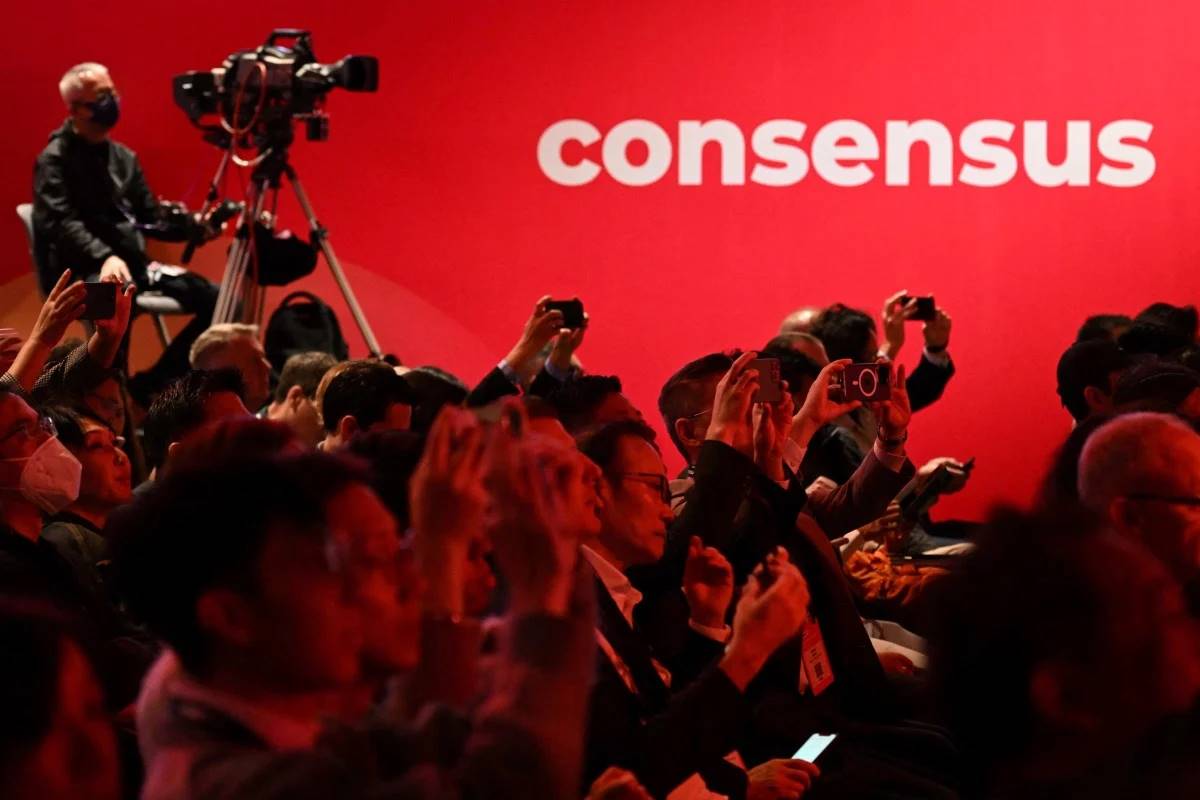
The global Web3 spotlight is focused on Hong Kong. The top-tier Web3 industry event Consensus made its debut in Hong Kong this week, attracting over 10,000 practitioners to the convention center, reigniting the crypto fever on both sides of the harbor. The Hong Kong Consensus event is not only a showcase for global Web3 innovation, but also a stage for Hong Kong's Web3 strategy - since the "Policy Statement on the Development of Virtual Assets in Hong Kong" in October 2022, Hong Kong has been accelerating the construction of a bridge connecting traditional finance and the crypto world with a "regulation-first, ecosystem-driven" strategy, becoming an indispensable part of the global Web3 landscape.
As an industry observer, OKG Research has been tracking the development of Hong Kong's Web3 policies since 2022, focusing on the ecosystem and technological innovation practices, and has produced more than 30 in-depth articles on hot topics such as VASPs, stablecoins, and RWA tokenization, as well as established column content cooperation with mainstream Hong Kong media such as the Sing Tao Group and the Ta Kung Pao Media Group, continuously providing industry insights. Leveraging the Consensus event as an opportunity, we have systematically reviewed the core dynamics of Hong Kong's Web3 ecosystem and launched the "HK Web3 Frontline" special topic, hoping to give more people a comprehensive understanding of the evolutionary process of Hong Kong's Web3 ecosystem.
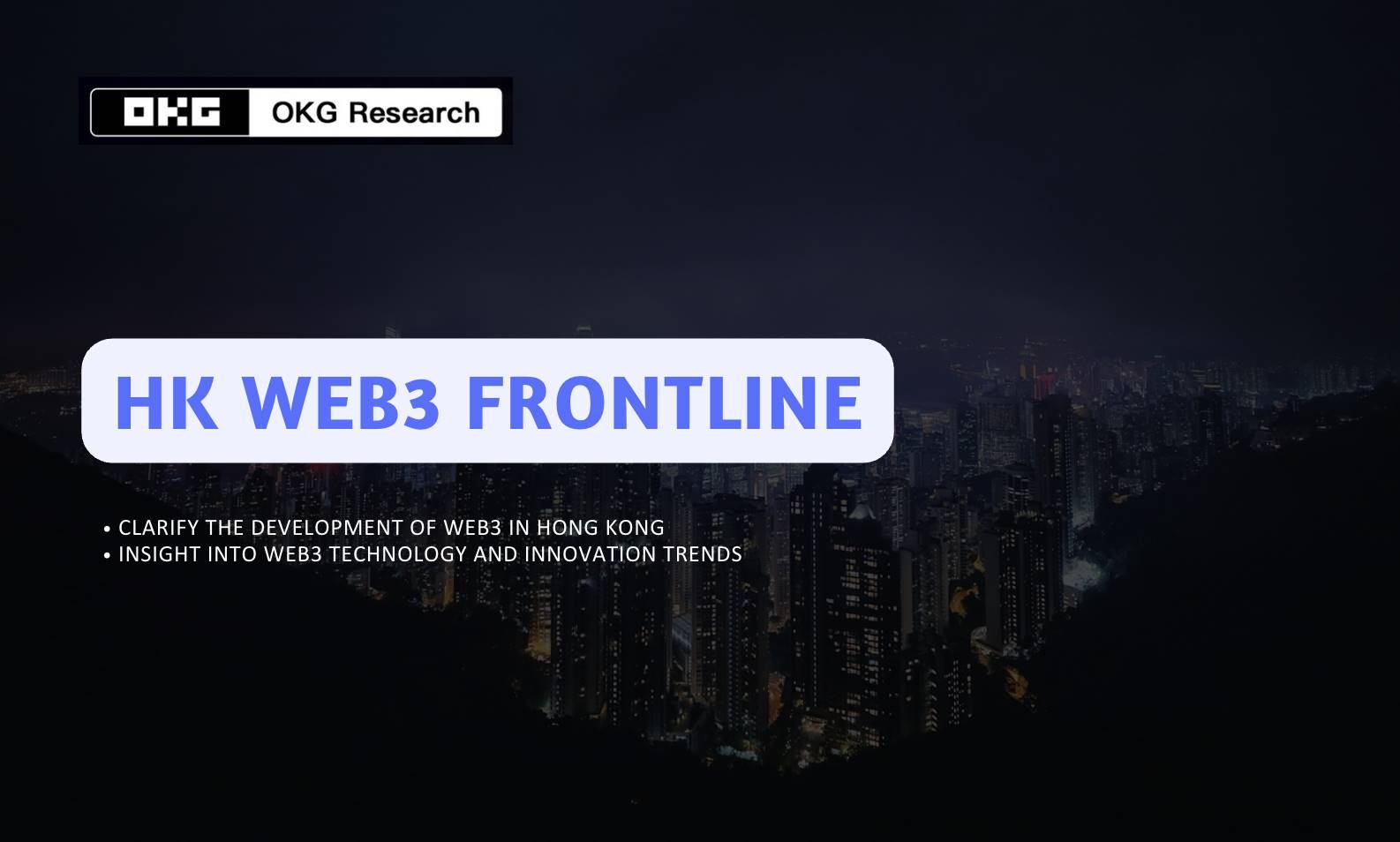
I. Regulation-first: Orderly Exploration of the Compliance Boundaries of Web3
Compliance has always been the core keyword for the development of Hong Kong's Web3. Since the release of the policy statement, Hong Kong has been continuously exploring the compliance boundaries of Web3, successively introducing a series of regulatory systems, laying the foundation for the development of Hong Kong's virtual asset and Web3 industries, and providing clear compliance guidelines for industry participants.
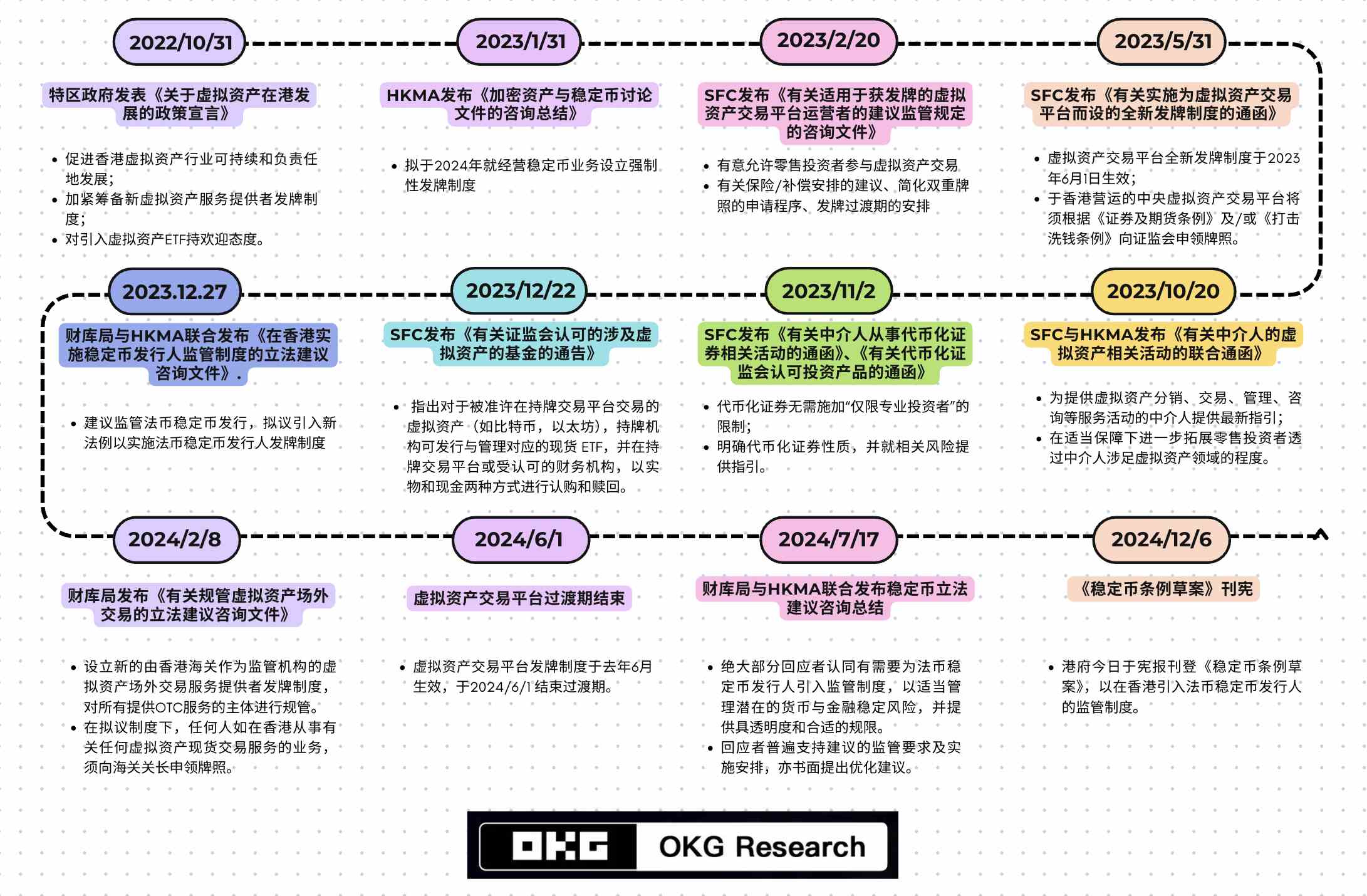
Starting with the Virtual Asset Service Provider (VASP) license, the Hong Kong virtual asset market is gradually establishing a compliant development system, and on this basis, promoting regulatory details in areas such as stablecoin issuers, custodian service providers, and OTC, to ensure market safety and transparency. These measures not only have enhanced the credibility of Hong Kong's virtual asset market, but have also been continuously attracting capital and enterprises to flow into Hong Kong. By the end of 2024, the Hong Kong Cyberport alone has gathered nearly 300 Web3 companies, with a cumulative financing scale of over HK$400 million.
However, Julia Leung, the CEO of the Hong Kong Securities and Futures Commission (SFC), repeatedly mentioned the "balance between regulation and innovation" in her opening speech at the Consensus conference. How should relevant practitioners maintain their innovative momentum in the existing regulatory environment in Hong Kong? Compared to the US, can Hong Kong's crypto regulatory measures drive market development?
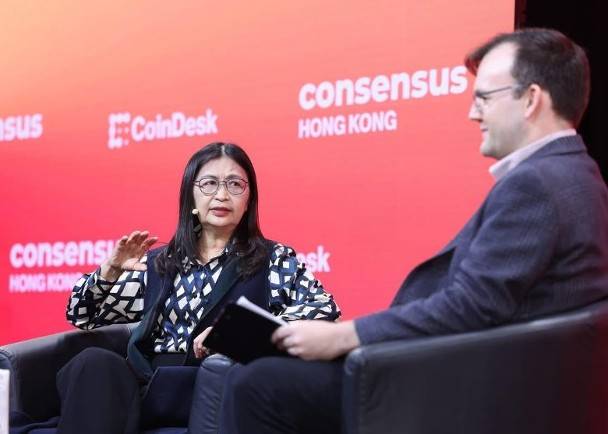
II. HKD Stablecoin: Hong Kong's "Financial" Ambition
Stablecoins have been a hot topic at this Consensus conference, and have also been a focus area that Hong Kong has been continuously paying attention to and investing in. Standard Chartered Hong Kong, Animoca Brands, and PCCW have recently been reported to be establishing a joint venture, hoping to apply for a license from the Hong Kong Monetary Authority under the new regulatory system to issue a stablecoin pegged to the Hong Kong dollar. Circle, the issuer of USDC, has also previously announced a partnership with the three note-issuing banks in Hong Kong to launch the HKDCoin, which is pegged 1:1 to the Hong Kong dollar.
Although it is impossible to determine how much of the pie the HKD stablecoin can ultimately capture in the current environment where the US dollar dominates the market, for Hong Kong, the development of the HKD stablecoin is an inevitable choice to seize the initiative in Web3 development and occupy the future financial frontier. The connection channel with fiat currency is the most valuable and easiest to accumulate value in the current crypto ecosystem, and stablecoins are an indispensable infrastructure for building this channel; at the same time, the focus of the next stage of development of Web3.0 in Hong Kong and globally is to break down the barriers between the virtual and real worlds, and stablecoins are the core link connecting traditional finance and the crypto world, and may become a widely accepted payment tool.
If the HKD stablecoin can be widely used in the Web3 ecosystem, it will greatly enhance the competitiveness of Hong Kong and the Hong Kong dollar in the international financial market. But how should the HKD stablecoin be developed? What is its relationship with the digital Hong Kong dollar? Are the regulatory measures to be introduced in line with the current market situation?
III. RWA Tokenization: From Concept to a Trillion-Dollar Market Fission
RWA is undoubtedly the hottest concept at this Consensus. "The tokenization of real-world assets (RWA) is not a trend, but a necessity," as John Cahill, head of digital assets at Morgan Stanley, asserted at the "Institutional Investor Summit", revealing the strategic shift of traditional financial giants.
As a global financial center, Hong Kong is also actively embracing the RWA tokenization wave. The 2024 Policy Address proposed to promote RWA tokenization and the development of the digital currency ecosystem, and the Hong Kong Monetary Authority has also launched the "Digital Bond Funding Scheme" to encourage the capital market to adopt tokenization technology. The "Ensemble Project" led by the Hong Kong Monetary Authority has already attracted over 30 institutions including HSBC and Bank of China to participate, covering a wide range of assets such as bonds, funds, and carbon credits.
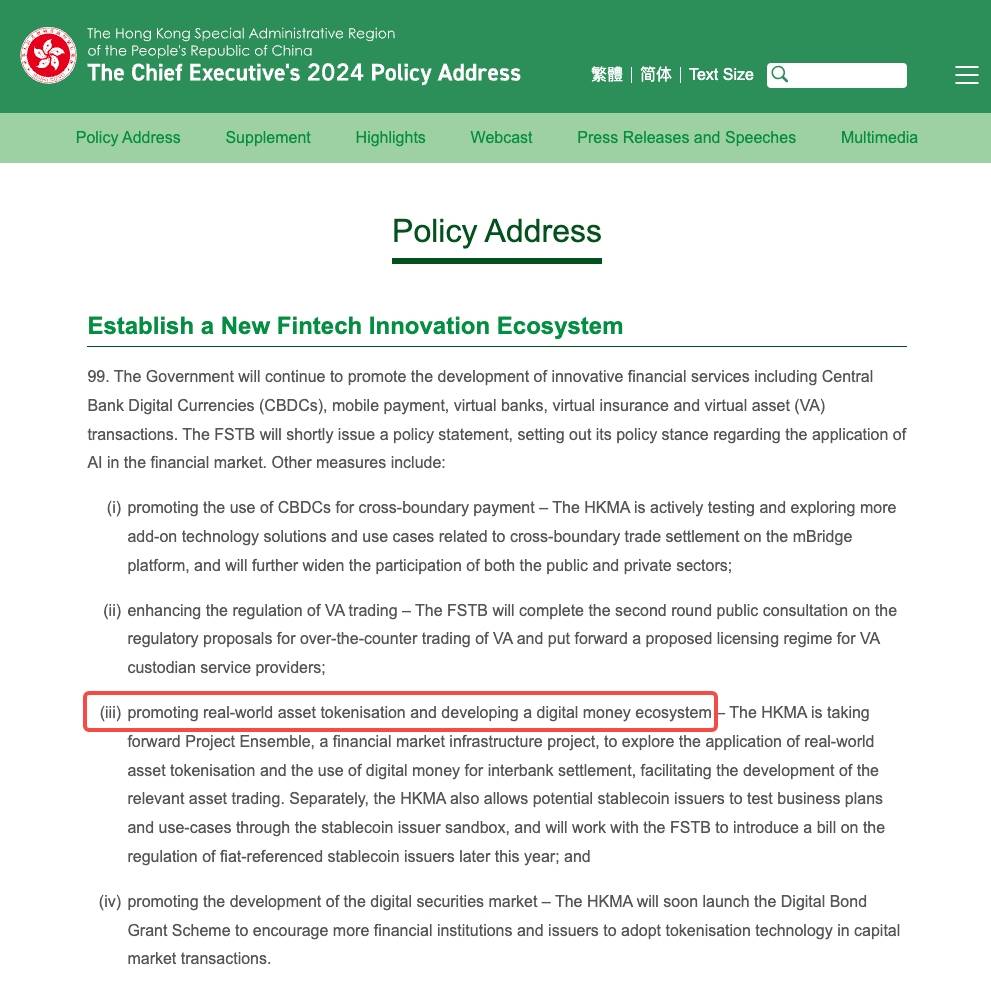
Christopher Hui, the Secretary for Financial Services and the Treasury of the Hong Kong SAR Government, also stated at the Consensus conference that Hong Kong is considering promoting the tokenization of gold, combining physical gold with blockchain technology, to provide investors with greater flexibility and enhanced security, hoping to drive financial market innovation through tokenization. But why is Hong Kong suitable for developing RWA? What areas of tokenization should be the focus at the current stage? Compared to the US, does Hong Kong have a competitive advantage in the field of tokenization?
IV. ETF and OTC: The "Light and Shadow Battle" of Capital Channels
One of the key initiatives for Hong Kong's Web3 development in 2024 was the launch of virtual asset spot ETFs. From clearly accepting relevant applications at the end of 2023 to the official listing of 6 virtual asset spot ETFs on the Hong Kong Stock Exchange by the end of April, it took just over a hundred days, reflecting the "speed" and "efficiency" of the Hong Kong regulatory authorities. The launch of virtual asset spot ETFs has opened up another capital channel for investors to participate in crypto assets. By the end of 2024, the total AUM of Bitcoin spot ETFs in Hong Kong has exceeded HK$30 billion, accounting for 0.66% of the total Hong Kong ETF market.
In addition to the ETF channel, Hong Kong has also gradually formed a three-tier capital network of "licensed exchanges-compliant OTC-banks". Among them, the Hong Kong OTC trading volume has surged since 2023. According to incomplete statistics from OKG Research, the Hong Kong OTC market handles transaction volumes of nearly $10 billion per year, and has also attracted the attention of many international trade and cross-border payment users and institutions, becoming another important channel for Hong Kong to attract global capital.
Under the spotlight of Consensus 2025, Hong Kong has proven to be not only a policy innovator, but also an ecosystem builder. Regulation can be designed, technology can be iterated, but only a profound reverence for market rules is the ultimate weapon to weather the cycles. OKG Research will continue to track the development of Hong Kong's Web3 industry, providing our observations and insights to a wider range of users and market participants, and jointly contributing to the construction of a more prosperous Hong Kong Web3 ecosystem.








